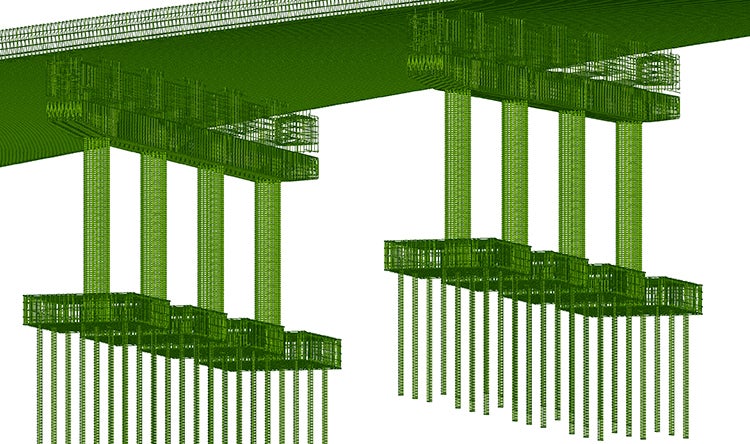PennDOT Digital Delivery Directive

PennDOT Digital Delivery Directive
A Statewide Transformation to 3D Design and Delivery
A leading state for implementing digital delivery and BIM strategies, Pennsylvania is continuing its national leadership with the Digital Delivery Directive. This game-changing effort will modernize the project delivery processes and contract document media used by the Pennsylvania Department of Transportation, incorporating digital data and 3D technology.
HDR is leading the strategic planning and implementation of the transformational initiative, which aims to provide the ability to bid all PennDOT construction projects using 3D technology by 2025. This improvement allows for streamlined processes, more robust datasets and improved communication of design intent. This results in higher quality designs, reduced change orders in construction and better data for use in asset management and operations and maintenance. Our responsibilities include developing the modeling requirements, processes, workflows, workforce development, legislative revisions and policies needed to realize this digital transformation. HDR is providing support on pilot projects in design and construction, which are using the digital delivery guidance documents and new technology.
From 2D to 3D Design
PennDOT’s current construction contract documents comprise 2D plans in PDF format. Through the directive, 3D engineered models will replace these PDF plans as contractual deliverables. The project elements will be contained within a signed and sealed digital model — a series of files that includes 2D and 3D model elements with attached attributes and references. Using new model viewer software, users can select elements, access property attributes, 2D details or call outs along with relevant calculation data. Model elements could also include photos, videos, documents and hyperlinks attached by users to show more detail.
These digital models will be used during advertisement and on the project site by contractors and construction inspectors, who will benefit from a more complete representation of the design intent delivered in a more directly usable format. The improved usability will enhance construction planning and mean less time manually extracting information, such as for estimating and construction layout. Comprehensive information and links mean the contractor’s foremen and PennDOT’s inspectors can use the digital model to reference details such as the pay item name, number and units connected to a specific part of a project.

Mapping Out a Digital Transformation
To execute the initiative, HDR is drawing upon national and international guidelines for implementing digital delivery, as well as taking into account PennDOT’s unique needs. The first step was to assess the needs and staff familiarity with relevant technology. That assessment helped tailor the development and deployment of future phases.
The initiative is being implemented in three phases: Strategic Planning, Development and Deployment. The initial assessment was completed and a strategic plan created, providing the team a roadmap to develop new roadway, bridge and drainage standards, and to support pilot projects to test processes, workforce development efforts and new visualization processes. Currently in the deployment phase, the directive has constructed five pilot projects, with over 40 in design and construction. A new implementation policy has been released in 2025, providing the next steps in institutionalizing digital delivery throughout PennDOT and the state's 11 districts.
The shift to 3D will touch every part of the project delivery process, from design to construction to post-construction activities such as maintenance and asset management. Each of these activities will require new quality management workflows and revisions of existing PennDOT policies, standards and guidance.








